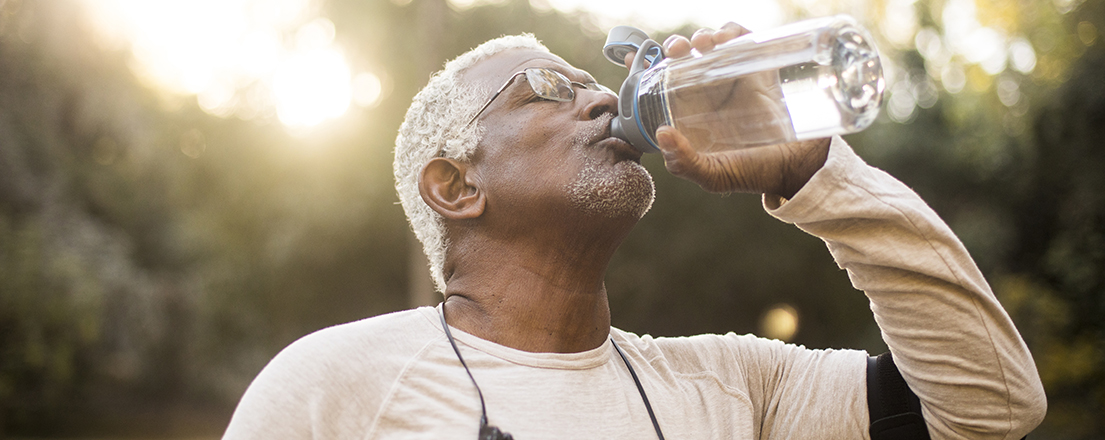
Summer Hydration 101: What Most People Get Wrong (and How to Get It Right)
As chief medical officer at HAP — and as someone who enjoys Michigan’s warm, sunny days as much as anyone — I understand how easy it is to forget to drink enough water. When we’re out enjoying festivals, beach days and backyard barbecues, staying hydrated often takes a back seat.

Charles Bloom, DO, FACOEP
HAP Senior Vice President, Chief Medical Officer
Hydration is one of the most important ways to maintain your energy, keep your mind sharp and help your body function properly — especially when temperatures rise. At HAP, we care about your everyday health, so I’d like to share a few simple, real-life tips to help you stay ahead of dehydration this season.
But first, let’s clear up a few common myths that may be keeping you from getting the fluids you need.
Debunking hydration myths
- Myth: You must drink eight glasses of water daily.
Fact: Hydration needs vary. Listen to your body and adjust your intake based on activity and climate. - Myth: Caffeinated drinks dehydrate you.
Fact: According to the Institute for Scientific Information on Coffee, moderate caffeine intake does not significantly affect hydration levels. - Myth: Only water hydrates.
Fact: Other beverages and water-rich foods also contribute to your daily fluid intake, according to the Harvard T.H. Chan School of Public Health.
How Much Water Should You Drink?
The “eight glasses a day” rule is a helpful starting point, but it doesn’t apply to everyone. Your fluid needs depend on your body size, activity level, health and the weather.
The National Academies of Sciences, Engineering and Medicine recommends about 125 ounces of fluids daily for men and about 91 ounces for women. That includes all fluids — not just water. Beverages like milk, tea and juice count, as do water-rich foods such as fruits and vegetables.
If you're active or spending time outdoors, you'll likely need more fluids to replace what you lose through sweat. The Mayo Clinic also emphasizes that environmental conditions and physical exertion can increase your fluid needs.
Tip: Try to drink half your body weight in ounces of fluids each day.
Example: If you weigh 160 pounds, aim for about 80 ounces.
Tips to Stay Hydrated
- Drink regularly: Don’t wait until you’re thirsty. According to the Centers for Disease Control and Prevention, thirst can be a delayed sign of dehydration.
- Monitor your urine: The Cleveland Clinic says pale yellow urine typically indicates proper hydration.
- Eat water-rich foods: Add fruits and vegetables such as watermelon, cucumbers and strawberries to your meals.
- Limit diuretics: Reduce alcohol and high-caffeine drinks, which can increase fluid loss, according to the U.S. National Library of Medicine.
- Replenish electrolytes: If you’re sweating heavily, the Mayo Clinic suggests choosing drinks that include electrolytes to replace lost minerals.
Recognizing Signs of Dehydration
Watch for these common signs of dehydration:
- Dry mouth and lips
- Dark-colored urine
- Fatigue or dizziness
- Headaches
- Confusion or irritability
If you notice these signs, increase your fluid intake. Seek medical attention if symptoms persist. The National Institutes of Health warns that untreated dehydration can become a serious health concern.
Stay ahead of dehydration
Being proactive about your hydration helps you stay safe and feel your best during the hottest days of summer. HAP members have access to a network of primary care providers and/or specialists, making it easier to find the right care. To locate a nearby doctor, visit HAP's Find-A-Doctor Tool.
Categories: Get Healthy , Get Involved , Get Moving
